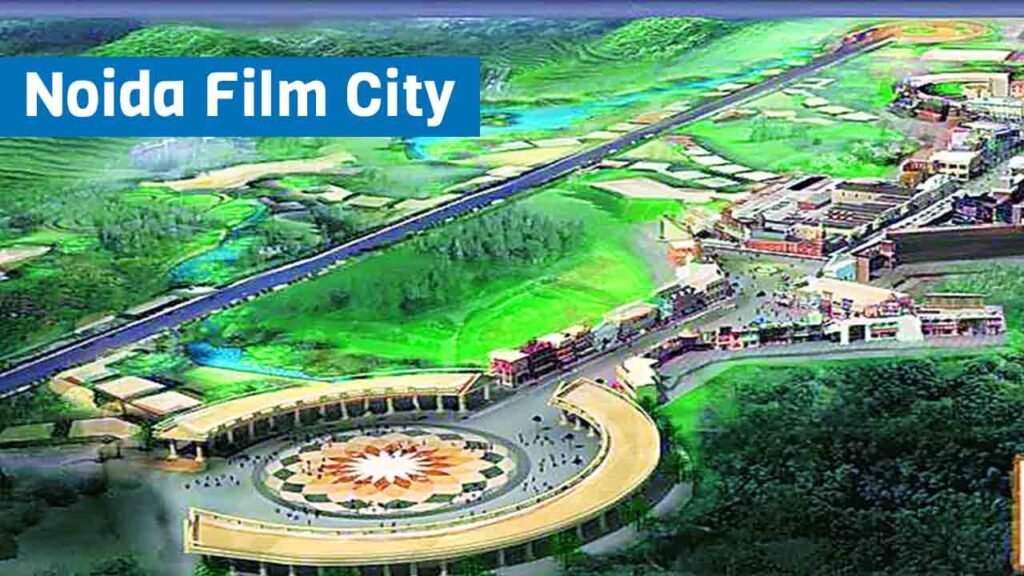
The Yamuna Expressway is a landmark infrastructure project, connecting the National Capital Region (NCR) with Agra, home to one of the most famous architectural wonders in the world, the Taj Mahal. Inaugurated in 2012, the 165.5 km long, six-lane access-controlled expressway significantly shortens travel time between Delhi and Agra while opening new avenues for industrial, commercial, and urban development along its corridor.
1. Key Objectives and Vision of the Yamuna Expressway
When planning the Yamuna Expressway, the Uttar Pradesh government had several key objectives:
- Faster Travel Time: One of the expressway’s most notable features is its ability to cut travel time between Delhi and Agra to approximately 100 minutes, drastically reducing the previous travel time of over 3-4 hours. This makes day trips between the two cities easier for both tourists and business travelers, encouraging economic and cultural exchanges.
- Boosting Tourism: Agra, being a historic city with monuments like the Taj Mahal and Agra Fort, sees millions of tourists every year. The Yamuna Expressway enhances accessibility to these tourist spots, encouraging both domestic and international tourism.
- Facilitating Industrial and Urban Development: The expressway’s construction was also aimed at boosting industrial and urban development in the region. Stretching across six districts, it provides connectivity to major industrial hubs and opens up vast tracts of land for planned development. The regions along the expressway, particularly areas near Noida and Greater Noida, have already seen significant growth in residential, industrial, and commercial sectors.
2. Construction and Technical Specifications
- Length and Structure: The expressway is 165.5 km long and stretches from Pari Chowk in Greater Noida to Kuberpur on National Highway 2 (NH-2) near Agra. Built with six lanes, the expressway has provisions to expand to eight lanes to accommodate future traffic growth.
- Public-Private Partnership (PPP): The expressway was developed under a Public-Private Partnership (PPP) model, with the Jaypee Group serving as the concessionaire. The construction cost amounted to around Rs 13,000 crore, making it one of India’s largest PPP infrastructure projects. The concession period is 36 years, during which the Jaypee Group has the right to collect tolls and develop the surrounding land.
- Safety Features: Safety is a critical component of the Yamuna Expressway. It includes emergency call boxes every 5 km, and dedicated rest areas, making it safer for long-distance travel. Additionally, the expressway is monitored through CCTV cameras to ensure smooth traffic management and quick response in case of accidents or emergencies.
3. Economic and Real Estate Potential
The Yamuna Expressway has opened up unprecedented opportunities for real estate, commercial, and industrial development. Some key factors contributing to its economic potential include:
- Industrial Hubs and SEZs: Alongside the expressway, the Yamuna Expressway Industrial Development Authority (YEIDA) has identified areas for developing industrial zones, IT parks, and Special Economic Zones (SEZs). These zones are expected to attract significant investments in sectors such as manufacturing, logistics, and IT services.
- Real Estate Boom: With the rapid development of Noida, Greater Noida, and the nearby areas, there has been a surge in real estate activities. Affordable housing projects, luxury residential complexes, and commercial spaces are coming up near the expressway, catering to the growing demand. Prominent real estate developers have launched various residential and commercial projects that benefit from easy connectivity to the NCR and Agra.
- Jewar Airport Development: One of the most ambitious projects linked to the Yamuna Expressway is the upcoming Noida International Airport at Jewar. Expected to be the largest airport in India, this airport will further boost the area’s attractiveness as a residential and industrial hub. Proximity to the expressway ensures easy access to the airport, enhancing the region’s overall connectivity.
4. Infrastructure Supporting Growth
The expressway is not an isolated project; it is part of a broader vision to enhance the infrastructure in Uttar Pradesh and NCR. Several other projects are underway that support and complement the Yamuna Expressway, making it a cornerstone for the region’s future development:
- Eastern Peripheral Expressway: This expressway encircles Delhi, providing a bypass for heavy vehicles, thus reducing congestion in the NCR. The Yamuna Expressway seamlessly connects to it, allowing vehicles to travel to multiple destinations with ease.
- Dedicated Freight Corridor (DFC): The Western and Eastern Dedicated Freight Corridors pass near the Yamuna Expressway, making the area a logistical hotspot for goods transportation. The expressway’s strategic location along the freight corridors makes it ideal for industries that depend on large-scale logistics, warehousing, and transportation.
- Delhi-Mumbai Industrial Corridor (DMIC): Another significant infrastructure project close to the Yamuna Expressway is the Delhi-Mumbai Industrial Corridor (DMIC), designed to enhance manufacturing and industrial growth along its route. The DMIC’s proximity to the expressway allows for easier transportation of goods, further attracting businesses to set up operations along the expressway.
5. Key Landmarks and Development Zones Along the Expressway
- Greater Noida: As the starting point of the Yamuna Expressway, Greater Noida has been a hub of residential, educational, and industrial development. Its close proximity to Delhi and the upcoming Noida International Airport has positioned it as one of the fastest-growing cities in the NCR.
- Buddh International Circuit: The Formula 1 racetrack, Buddh International Circuit, located near the expressway, is another major attraction. This sports infrastructure has been developed to host international sporting events, drawing attention from investors and developers interested in promoting sports tourism and leisure activities.
- Upcoming Film City: The Uttar Pradesh government has also announced the development of a massive film city near the expressway. The proposed film city is expected to rival Mumbai’s film industry, offering modern production facilities and generating employment for thousands in the entertainment sector.

6. Social and Environmental Impact
While the Yamuna Expressway brings several economic and developmental benefits, it is essential to consider its social and environmental impact. The construction of the expressway involved the acquisition of land, affecting local communities in the process. The Yamuna Expressway Industrial Development Authority (YEIDA) worked to ensure proper compensation and rehabilitation for those affected by land acquisition.
On the environmental front, the expressway is designed with various features to minimize its ecological footprint. For instance, the developers included green zones and tree plantations along the road. Additionally, strict monitoring and regulation have been enforced to prevent accidents and reduce pollution levels in the region.
7. Toll Rates and Economic Sustainability
The expressway operates on a toll-based system, where users pay fees based on the type of vehicle and distance traveled. The toll collection is critical for maintaining the expressway’s high standards and ensuring its financial sustainability.
- Toll Rates: The toll charges range from Rs 150 to Rs 510 for cars, depending on the distance traveled, and higher rates are applicable for commercial vehicles. The expressway earns significant revenue from toll collections, which not only supports its maintenance but also contributes to future infrastructure development along its route.
- Concession Period: The concessionaire, Jaypee Infratech Ltd, holds the right to collect tolls for 36 years. This model ensures that the expressway remains financially viable while encouraging further investments in the region.
8. Future Prospects and Challenges
As the Yamuna Expressway continues to serve as a critical artery in Uttar Pradesh’s infrastructure, several future prospects and challenges need to be addressed:
- Expansion to Eight Lanes: With traffic volumes increasing due to the rapid urbanization of areas like Greater Noida and Agra, the six-lane expressway may need to be expanded to eight lanes to avoid future congestion.
- Sustainability: Ensuring that the surrounding developments adhere to environmental and social sustainability principles will be essential. Managing the urban sprawl and ensuring that growth does not adversely affect the local ecology is a challenge that the authorities will need to monitor closely.
- Real Estate Oversupply: While the expressway has spurred real estate growth, there is a potential risk of oversupply in residential and commercial spaces. Authorities and developers need to balance growth to ensure that the region’s development remains aligned with market demand.
Conclusion
The Yamuna Expressway has emerged as a transformative project that significantly impacts connectivity, industrialization, and urbanization in northern India. With robust infrastructure, growing real estate demand, and a strategic location near key projects like Jewar Airport and the Delhi-Mumbai Industrial Corridor, the expressway is set to play a pivotal role in shaping the future of the NCR and surrounding regions. However, as with any large-scale development, sustainable growth, environmental conservation, and balanced real estate development will be crucial to its long-term success.






